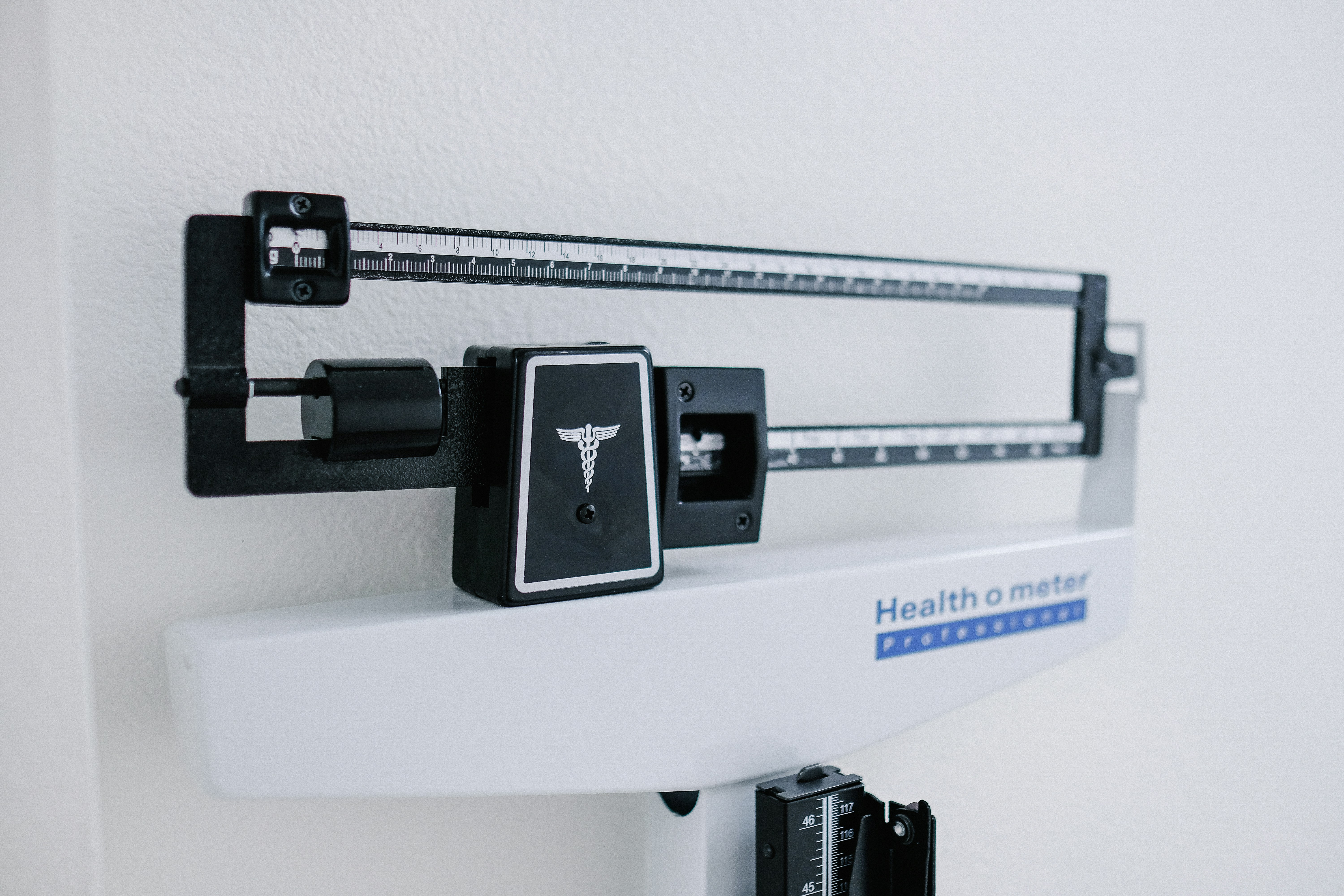Are you struggling to find the right balance between following a low-oxalate diet and meeting your other dietary needs? If so, you’re not alone. Many individuals who need to limit their oxalate intake for medical reasons find it challenging to ensure they are getting all the necessary nutrients from their diet. But fear not, because in this article, you will discover valuable tips and tricks on how to effectively combine a low-oxalate diet with your other dietary needs. By following these guidelines, you can achieve a well-rounded and balanced diet that supports your overall health and wellbeing.
Understanding Low-Oxalate Diet
What is a Low-Oxalate Diet?
A low-oxalate diet is a dietary approach that restricts the intake of foods high in oxalates. Oxalates are naturally occurring compounds found in many fruits, vegetables, and grains. While they are generally harmless for most people, some individuals may experience health issues related to high oxalate levels, such as kidney stones or digestive problems. By following a low-oxalate diet, you aim to reduce oxalate intake and minimize the risk of these complications.
Benefits of a Low-Oxalate Diet
There are several potential benefits to embracing a low-oxalate diet. By reducing your oxalate intake, you may decrease the risk of developing kidney stones, which can be incredibly painful and debilitating. Additionally, for those with certain health conditions, such as inflammatory bowel disease or kidney diseases, a low-oxalate diet could help alleviate symptoms and promote overall well-being. However, it’s important to note that the benefits may vary from person to person, and consulting with a healthcare professional is crucial for personalized advice.
Foods to Avoid on a Low-Oxalate Diet
When following a low-oxalate diet, there are certain foods that you should avoid or consume in moderation. High-oxalate foods include spinach, rhubarb, beets, nuts, and certain legumes. Chocolate, tea, and some beverages made from fruits like orange and cranberry also contain significant amounts of oxalates. It’s essential to read food labels and familiarize yourself with the oxalate content of different foods to make informed choices. While you don’t have to completely eliminate these foods from your diet, it’s important to be mindful of portion sizes and balance your overall oxalate intake.
Identifying Other Dietary Needs
Consulting a Healthcare Professional
To effectively combine a low-oxalate diet with other dietary needs, it’s crucial to consult with a healthcare professional who specializes in nutrition. They can help you identify your specific dietary requirements based on your medical conditions, allergies, or intolerances. Working together with a healthcare professional ensures that you receive personalized guidance and support in managing your dietary needs while still maintaining a balanced and nutritious diet.
Understanding Your Specific Dietary Needs
Everyone has unique dietary needs, and it’s vital to understand yours when combining a low-oxalate diet with other dietary requirements. Consider any food allergies, intolerances, or medical conditions that may necessitate specific dietary modifications. For example, if you have celiac disease, you’ll also need to follow a gluten-free diet in addition to the low-oxalate approach. By understanding your specific needs, you can better navigate the challenge of combining multiple dietary restrictions and find common ground that meets your nutritional requirements.
Identifying Potential Conflicts with a Low-Oxalate Diet
Combining a low-oxalate diet with other dietary needs may present certain challenges or conflicts. For example, if you are following a low-oxalate diet and also need to limit your intake of certain nutrients, such as sodium or fat, it can be tricky to strike a balance. Similarly, if you are managing diabetes or have specific carbohydrate restrictions, you must be mindful of the overall carbohydrate content of low-oxalate foods. Identifying and addressing these potential conflicts will require careful planning and education, and working with a healthcare professional can provide valuable guidance.
Finding Common Ground
Identifying Overlapping Foods
When juggling multiple dietary requirements, it can be helpful to identify foods that can be included in both the low-oxalate and other dietary approaches. For example, many fresh fruits and vegetables, such as broccoli, cauliflower, and green beans, are low in oxalates and can be a part of both a low-oxalate and a low-sodium diet. Similarly, lean proteins like chicken, turkey, and fish can be included in various dietary approaches. By finding common ground in food choices, you can simplify your meal planning and ensure a more varied and enjoyable diet.
Creating a Balanced Meal Plan
Designing a balanced meal plan that accommodates both your low-oxalate diet and other dietary needs is essential for maintaining optimal health. Focus on incorporating a variety of fruits, vegetables, whole grains, lean proteins, and healthy fats into your meals. Including foods from different food groups ensures that you receive a wide range of nutrients while still adhering to your dietary restrictions. Additionally, be mindful of portion sizes to avoid overconsumption of certain nutrients or ingredients that could be problematic for your specific dietary requirements.
Making Adjustments to Accommodate Both Diets
In some cases, you may need to make adjustments to accommodate both your low-oxalate diet and other dietary needs. This could involve modifying recipes to replace high-oxalate ingredients with suitable alternatives or adjusting cooking methods to reduce the oxalate content in certain foods. For instance, steaming or boiling vegetables can help reduce oxalates compared to high-heat cooking methods like frying. It might initially seem challenging, but with creativity and exploration, you can find delicious and nutritious ways to combine your dietary needs successfully.
Navigating Food Choices
Managing Portion Sizes
Even when following a low-oxalate diet and other dietary restrictions, portion control remains crucial. It is essential to be mindful of the portion sizes of different foods to ensure you are not exceeding your recommended nutrient intake or inadvertently consuming excess oxalates. Utilize measuring utensils or a food scale to accurately portion your meals and snacks. Additionally, pay attention to your body’s hunger and fullness cues to prevent overeating and promote a healthy relationship with food.
Reading Labels and Nutritional Information
When combining a low-oxalate diet with other dietary needs, reading labels and familiarizing yourself with nutritional information becomes even more important. Read the ingredients list and check for any potential allergens or problematic ingredients that may conflict with your dietary restrictions. Additionally, review the nutritional information panel to determine the oxalate content, sodium levels, or other nutrients that need to be considered. By being informed about the foods you consume, you can make informed choices that align with your dietary requirements.
Doing Research on Oxalate Content in Foods
To effectively manage a low-oxalate diet, it can be helpful to do research on the oxalate content in different foods. Numerous reliable sources provide information about the oxalate levels in various fruits, vegetables, grains, and other food items. By familiarizing yourself with these sources and understanding which foods are high or low in oxalates, you can make informed decisions when planning your meals. Remember that everyone’s tolerance for oxalates varies, so tracking symptoms and reactions can also be beneficial in determining which foods work best for you.
Meal Planning Tips
Creating a Weekly Meal Plan
Meal planning is a valuable tool when combining a low-oxalate diet with other dietary needs. By dedicating time to plan your meals for the week ahead, you can ensure that you have an adequate variety of foods that align with your dietary restrictions. Consider including a balance of proteins, carbohydrates, and healthy fats while incorporating low-oxalate options and other foods that meet your specific dietary requirements. Prepare a grocery list based on your meal plan to help you stay organized and focused when shopping for ingredients.
Prepping and Batch Cooking
To make meal planning more efficient and enjoyable, consider prepping and batch cooking certain components of your meals in advance. Wash, chop, and store fruits and vegetables for quick and easy access throughout the week. Cook and portion proteins such as chicken or tofu, and batch cook grains like quinoa or rice. These preparatory steps can significantly streamline your cooking process and save time while ensuring you have nutritious and compliant meals readily available when time is limited.
Incorporating Variety into Your Meals
While combining multiple dietary needs may appear challenging, it’s crucial to prioritize variety in your meals. By incorporating a diverse range of foods, flavors, and textures, you can ensure that your meals remain exciting and enjoyable. Experiment with different cooking methods, spices, and herbs to add depth and complexity to your low-oxalate meals. Explore international cuisines and try new recipes that cater to both your low-oxalate needs and other dietary requirements. Embracing variety not only makes your meals more enjoyable, but it also helps ensure that you receive a wide array of essential nutrients.
Cooking Techniques and Recipes
Cooking Methods to Reduce Oxalate Content
Certain cooking methods can help reduce the oxalate content in foods. Steaming or boiling vegetables can be effective in lowering oxalates compared to high-heat cooking methods like frying. When preparing grains such as rice or oats, consider rinsing them thoroughly before cooking to remove excess oxalates. Soaking beans and legumes overnight and cooking them in fresh water can also reduce the oxalate levels. By employing these cooking techniques, you can still enjoy a variety of delicious foods while managing your low-oxalate and other dietary needs.
Tips for Flavorful Low-Oxalate Meals
Creating flavorful low-oxalate meals is entirely possible with some creativity and culinary knowledge. Experiment with various herbs, spices, and condiments to add depth and flavor to your dishes. For example, fresh herbs like basil, parsley, or cilantro can enhance the taste of a low-oxalate salad or main course. Incorporating citrus juices or vinegar-based dressings can brighten up the flavors of your meals. While it’s important to avoid certain high-oxalate ingredients, it doesn’t mean your meals have to be bland or monotonous. Get creative in the kitchen and enjoy delicious, flavorful low-oxalate meals.
Low-Oxalate Recipe Ideas
When incorporating a low-oxalate diet into your overall dietary needs, there are plenty of delicious and satisfying recipes to explore. Consider trying recipes like grilled chicken with roasted vegetables, quinoa salad with fresh herbs and lemon vinaigrette, or salmon fillets with steamed broccoli. Smoothies made with low-oxalate fruits and dairy-free milk alternatives can also be a nourishing and refreshing option. Look for recipe sources that cater to both low-oxalate diets and your other dietary requirements to ensure you have a variety of tasty and satisfying meals to enjoy.
Handling Dining Out and Social Situations
Communicating Your Dietary Needs
Effectively communicating your dietary needs is crucial when dining out or attending social gatherings. Inform the waitstaff or hosts about your dietary restrictions in a friendly and polite manner. Be specific about the foods you need to avoid and inquire about any potential substitutions or modifications that can be made. Planning in advance by researching restaurant menus or discussing meal options with the hosts can also help ensure that you have suitable choices that align with your low-oxalate and other dietary needs.
Finding Low-Oxalate Options in Restaurants
When dining out at restaurants, finding low-oxalate options may require some creativity and flexibility. Look for dishes that focus on grilled or roasted proteins like chicken, fish, or steak, as well as steamed or sautéed vegetables. Avoid dishes that contain high-oxalate ingredients like spinach or rhubarb. If needed, feel free to ask about any ingredient substitutions or modifications to accommodate your dietary needs. Many restaurants are willing to accommodate special dietary requests, so don’t hesitate to communicate your requirements and enjoy a satisfying meal out.
Making Smart Choices at Parties and Gatherings
Attending parties or gatherings where food is served can be challenging when following a low-oxalate diet alongside other dietary needs. However, with careful planning and preparation, you can make smart choices and still enjoy social occasions. Communicate with the host in advance about your dietary restrictions, and offer to bring a low-oxalate dish that you can enjoy and share with others. Focus on socializing and enjoying the company rather than solely focusing on the food. If necessary, eat a balanced meal beforehand to ensure you’re not too hungry and tempted by foods that don’t align with your dietary needs.
Supplementing Nutritional Gaps
Identifying Nutrient Deficiencies
When following a low-oxalate diet, it’s essential to be aware of potential nutrient deficiencies that can arise due to dietary restrictions. Certain foods that are restricted on a low-oxalate diet, such as spinach or whole grains, can be significant sources of nutrients like calcium or fiber. Regular monitoring of nutritional intake and working with a registered dietitian can help identify any potential nutrient deficiencies and ensure that you find suitable alternatives or supplements to meet your nutritional needs.
Consulting a Registered Dietitian
To effectively combine a low-oxalate diet with other dietary needs, it’s highly recommended to seek guidance from a registered dietitian. They can assess your specific dietary requirements, help you identify potential nutrient deficiencies, and provide personalized advice on meeting your nutritional needs. A registered dietitian can also assist in designing a well-rounded meal plan that accounts for your multiple dietary restrictions. Their expertise and knowledge will be invaluable in ensuring that you maintain optimal health while successfully managing your dietary needs.
Choosing the Right Supplements
In some cases, supplementation may be necessary to address specific nutrient gaps when combining different dietary needs. Discuss with your healthcare professional or registered dietitian about potentially appropriate supplements that are compatible with your low-oxalate and other dietary requirements. They can help you identify suitable supplements and recommend the appropriate dosage to ensure you maintain adequate nutrient levels. However, always remember that supplements should not replace a well-balanced diet; they are meant to complement your dietary efforts.
Dealing with Challenges and Setbacks
Managing Cravings and Temptations
Following a low-oxalate diet while accommodating other dietary needs can sometimes lead to cravings and temptations for restricted foods. It’s important to develop strategies to manage these challenges effectively. Consider finding low-oxalate alternatives or recreating healthier versions of your favorite dishes to satisfy cravings. Distract yourself with engaging activities or hobbies when cravings strike. Remind yourself of the reasons why you are following your dietary restrictions, and focus on the positive outcomes and improvements in your health.
Overcoming Potential Nutritional Imbalances
Juggling multiple dietary needs can potentially lead to nutritional imbalances if not carefully managed. Regularly monitor your nutrient intake and consult with a healthcare professional or registered dietitian to address any concerns or imbalances. They can guide you in adjusting your meal plan or recommend suitable alternatives or supplements to ensure you maintain optimal health. Remember that finding the right balance may take time and adjustments, so be patient and flexible as you work towards meeting your dietary needs.
Staying Motivated and Focused
Adhering to a low-oxalate diet while incorporating other dietary needs can be challenging at times, but staying motivated and focused is key to success. Remind yourself of the benefits you have experienced or expect to gain from following your dietary restrictions. Seek support from family, friends, or online communities who understand your journey and can provide encouragement and advice. Celebrate small achievements and milestones along the way, and remember that maintaining your overall health and well-being is worth the effort and dedication.
Monitoring Progress and Adjusting
Tracking Symptoms and Reactions
When following a low-oxalate diet alongside other dietary needs, it’s essential to track any symptoms or reactions that occur. Keep a food diary and note any changes in your health or well-being after consuming specific foods. This can help you identify any potential allergens or intolerances, monitor your oxalate tolerance, and make necessary adjustments to your meal plan. By staying vigilant and observant, you can fine-tune your diet to best suit your individual needs.
Regular Check-ins with Healthcare Professionals
Regular check-ins with healthcare professionals, such as your primary care physician or registered dietitian, are essential while combining a low-oxalate diet with other dietary needs. These professionals can assess your progress, address any concerns, and make any necessary modifications to your dietary plan. Regular monitoring of your health markers, such as kidney function or nutrient levels, can help ensure that your dietary approach is effective and tailored to your specific needs.
Making Necessary Modifications
As you progress on your journey of combining a low-oxalate diet with other dietary needs, it’s important to stay open to making necessary modifications. Everyone’s nutritional requirements and tolerances are unique, and what works initially may need adjustment over time. Stay in close contact with your healthcare professionals, keep track of your symptoms and reactions, and be willing to make necessary changes to your meal plan or supplementation as needed. By staying proactive and adaptable, you can continue to optimize your health and wellbeing.




